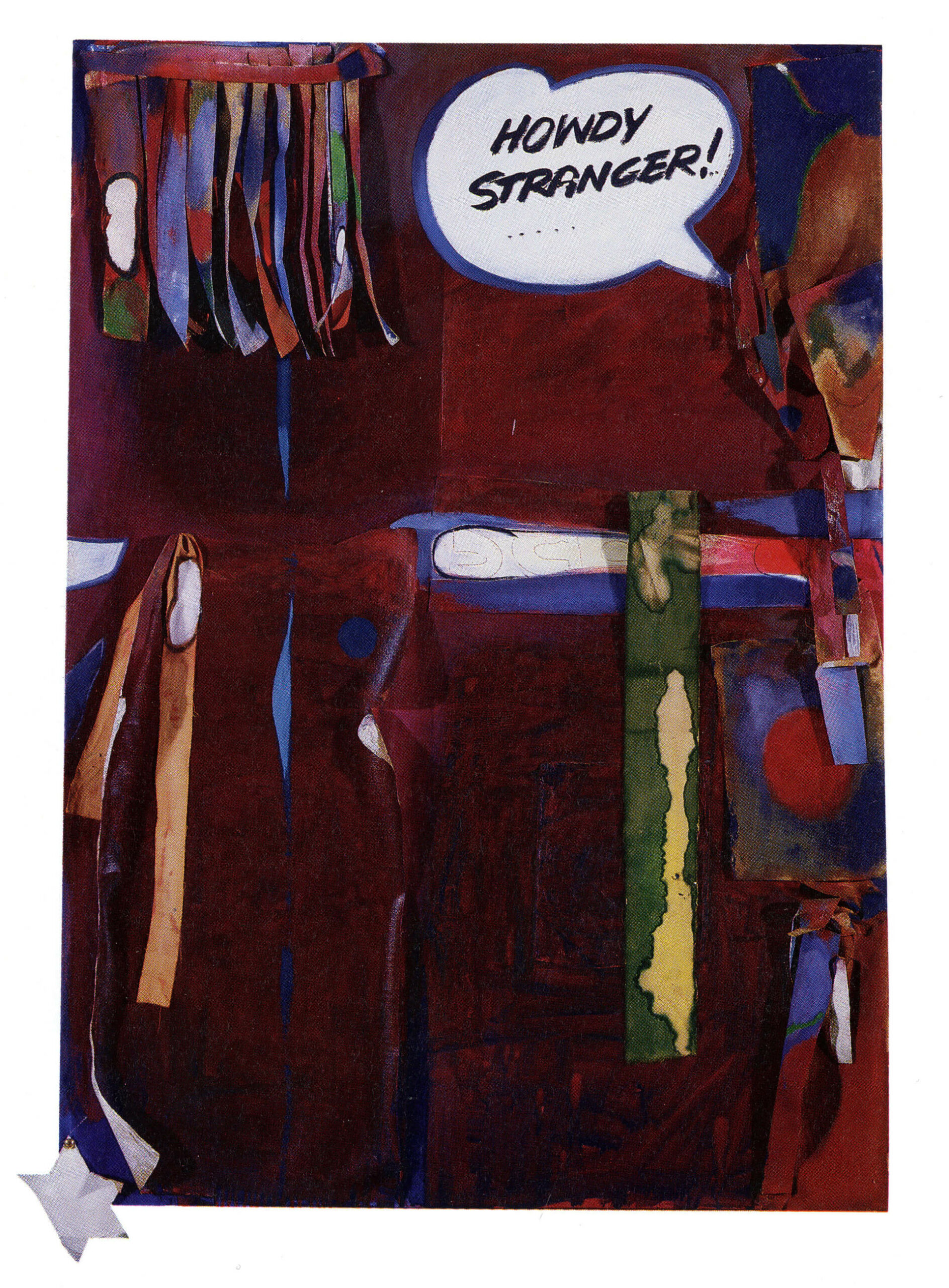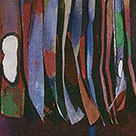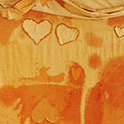Stranger in Town 1963

Joyce Wieland, Stranger in Town, 1963
Collage and oil on canvas, 117 x 82 cm
Collection unknown
In this work, made a year after Heart On, Wieland again combines cloth and pigment to create a hybrid assemblage. The palette is darker and moodier this time, but what immediately catches the viewer’s attention is a large white speech balloon with the hand-printed words “Howdy Stranger!” This is a work with multiple layers: a stretched canvas painted with abstract shapes serves as the base, while strips of painted cloth (a ripped-up painting) casually flop along the surface. Out of this semi-ruined modernist background the speech balloon pops up.

The title, Stranger in Town, raises the possibility that this is a nocturnal cityscape. The vertical format implies an urban passageway, and the voice emerging out of the gloom suggests an encounter between strangers, a daily occurrence in a modern metropolis. Wieland made a number of paintings and painting-assemblages that evoke urban signs and sensations both before and after moving to New York, such as Cityscape, 1960, and from 1963 The Battery and West 4th. But if Wieland was responding to street life with such artworks, the year 1963 marked her full-on engagement with pop culture.
It would be limiting to define Wieland only in relation to Pop art, but she did incorporate some fragments of pop culture—such as advertising, signage, exaggerated coloration, and comics—into her artworks. But whereas an artist like Roy Lichtenstein (1923–1997) enlarges entire panels from action or romance comic books, Wieland borrows only one distinctive comic-book element for Stranger in Town: the white speech balloon that she uses to introduce language into visual art is unmistakably derived from pop culture. “Howdy, stranger!” is a common vernacular greeting; here, though, we might ask, who is talking? Is this voice emanating from the artwork itself, and is it hailing us, the viewers?

 About the Author
About the Author
 More Online Art Books
More Online Art Books
 Acknowledgements
Acknowledgements